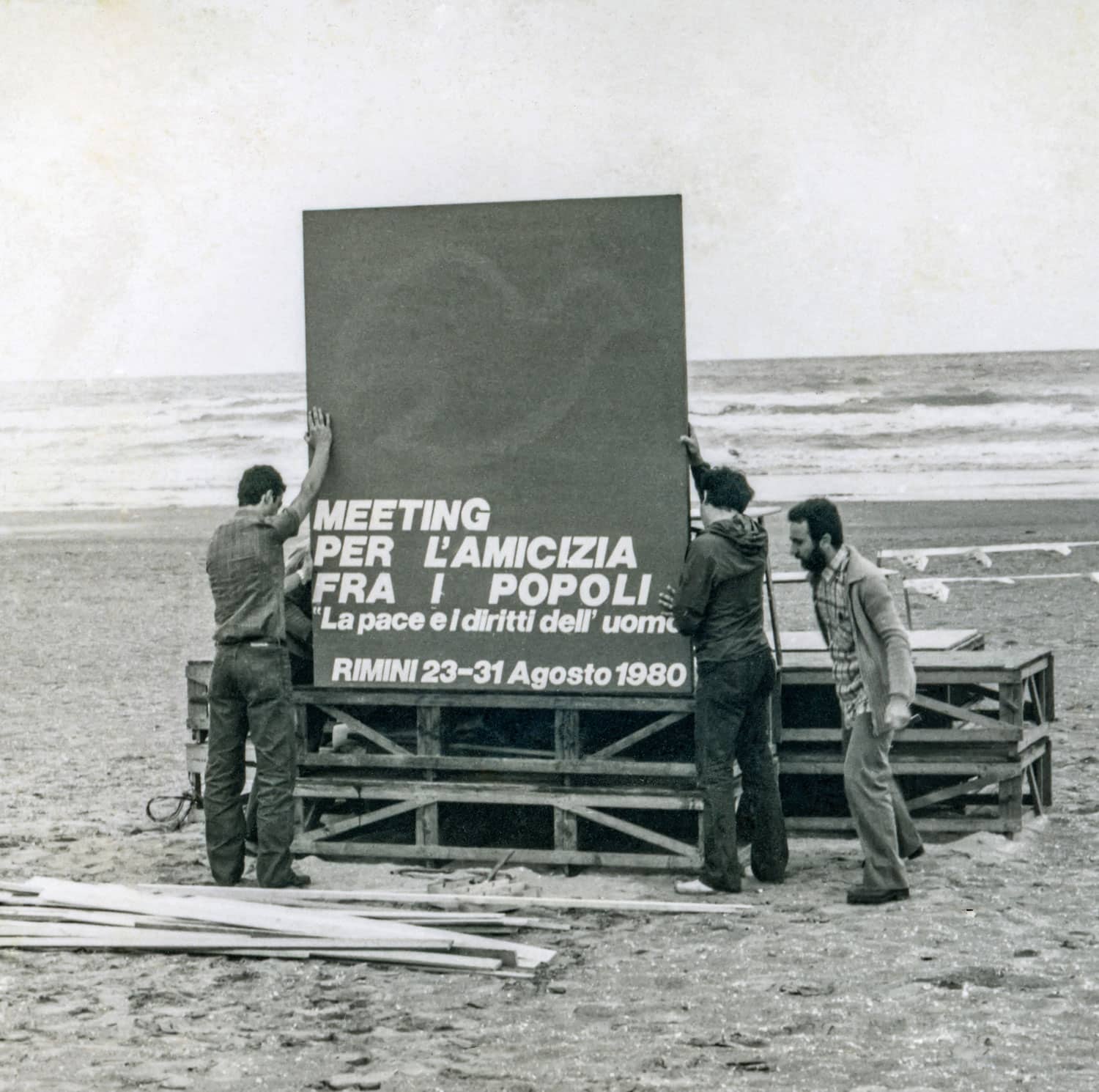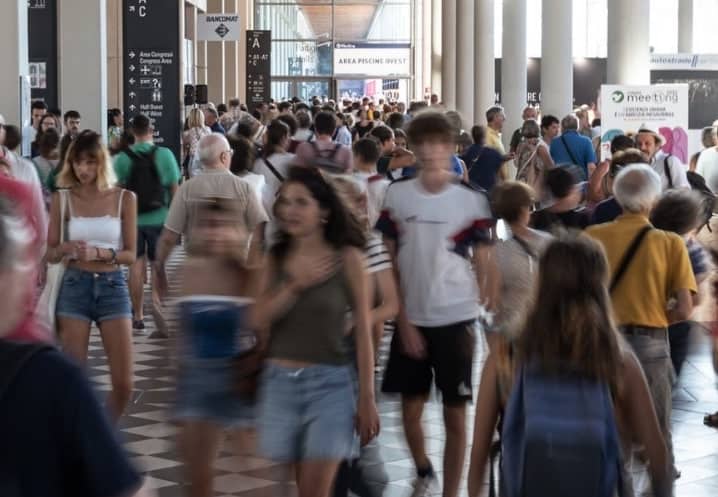Artists for the Meeting

At 7:30 p.m. on Wednesday, August 21, the South Hall of the Meeting is more crowded than usual, as an unusual exhibition, "Artists for the Meeting," is being inaugurated. Yet, art has always been a fundamental part of the Rimini event. The unique aspect of this occasion is that the artists involved are five individuals who have grown up with the Meeting, in a certain sense, right within its pavilions: Domenico Casadei, Paola Ceccarelli, Davide Frisoni, Alessandro La Motta, and Alice Tamburini. Each with their own art, each with their own sensitivity, all in search of the essential.
"This exhibition stems from the collaboration and friendship with these artists," said Roberta Tosi, an art historian present at the inauguration. "Artists are by vocation great seekers of the essential, meaning they are people who feel nothing is foreign to their path and for this reason, they seek the essence in everything. As the great John Ruskin, writer, painter, and art historian of the 19th century, wrote in his autobiography: 'I was interested in everything, from lichens to clouds.' Each of these artists thus stages their personal encounter with reality, offering it to visitors."

"The artist," continued the art historian, "feels the call to give form to what has not yet taken form, which forces them to bring out the best in themselves. Art consists of this personal encounter between reality and the best of us. On the part of the observer, then, there is a need to be open to the work with one's own sensitivity, allowing oneself to be moved. A personal gesture, therefore, given to the world. For this reason," Tosi concluded, "art has always also been the highest form of resistance to the drift of war."
"A people that does not generate artists is a dead people," commented poet Davide Rondoni, a friend of the Meeting and the protagonists of the exhibition. The artists showcased by the Meeting in this first edition of "Artists for the Meeting" are individuals animated in various ways by the same experience of a people that generates the Meeting. Art, for those who create it, is certainly a personal matter, but if this personal matter is not rooted in something greater than one's individuality, it will never have the chance to be what the great Ungaretti says of poetry, and which applies to every well-made work: 'a unanimous cry,' that is, a small or great treasure that gives voice to the soul that unites all people. This treasure has been offered by the artists summoned by the Meeting, so that the people of the Meeting, made up of all kinds of people but marked by the same attraction to a mysterious Presence, may transform this gift into another gift."

"We must be grateful to the artists," Rondoni affirmed, "because they choose to live a life entirely dedicated to the search for the essential. They are like boxers battered by words, colors, images, but in the end, what matters more than the life they have lived are the works they leave behind."
"Artists for the Meeting" represents the number 0 of a journey that aims to increasingly involve artists and was also created with the purpose of supporting the Meeting through art by means of a fundraising initiative. In fact, it is possible to purchase the exhibited works directly from their creators during this week. A portion of the proceeds will then be donated by the artists to the Meeting Foundation."
Benedetta Perazzini accompanies visitors through the exhibition. She is a student at the Catholic University of Milan, majoring in Economics and Management of Cultural Heritage - English language. Since June, she has been doing her curricular internship at the Meeting Foundation, another sign that the Rimini event provides attention and space to the talents and aspirations of young people who decide to contribute to the realization of this great event.
The essential lives in a continuous and dramatic tension between the invisible and the visible, which is so necessary for man to realize himself. The fact that the exhibition is located at the entrance of the Fair thus particularly underscores the call to look up towards a greater meaning, a meaning that chooses to dwell on this earth, offering itself to men always through signs expressed in tangible forms.
Alessandro Vergni










